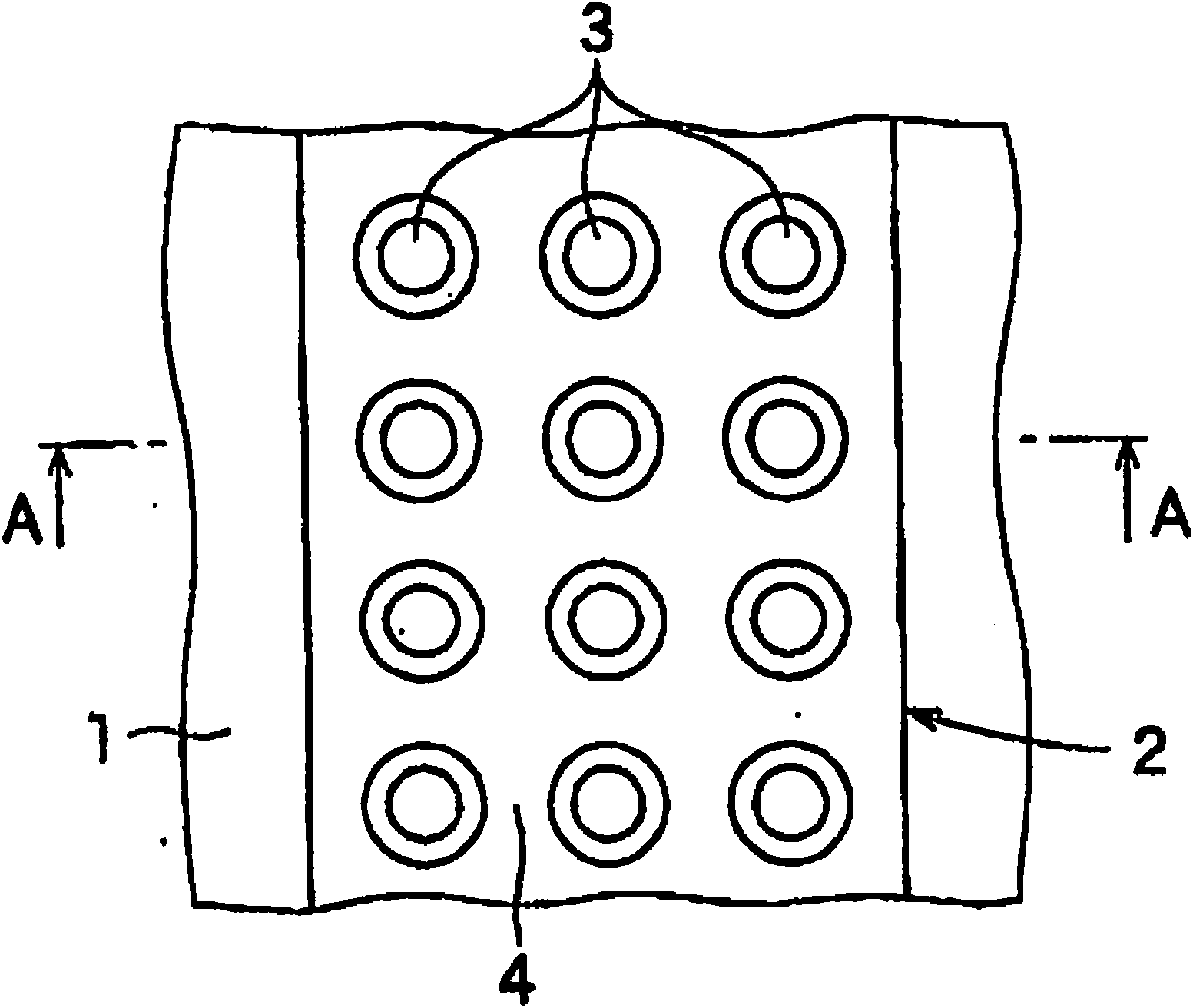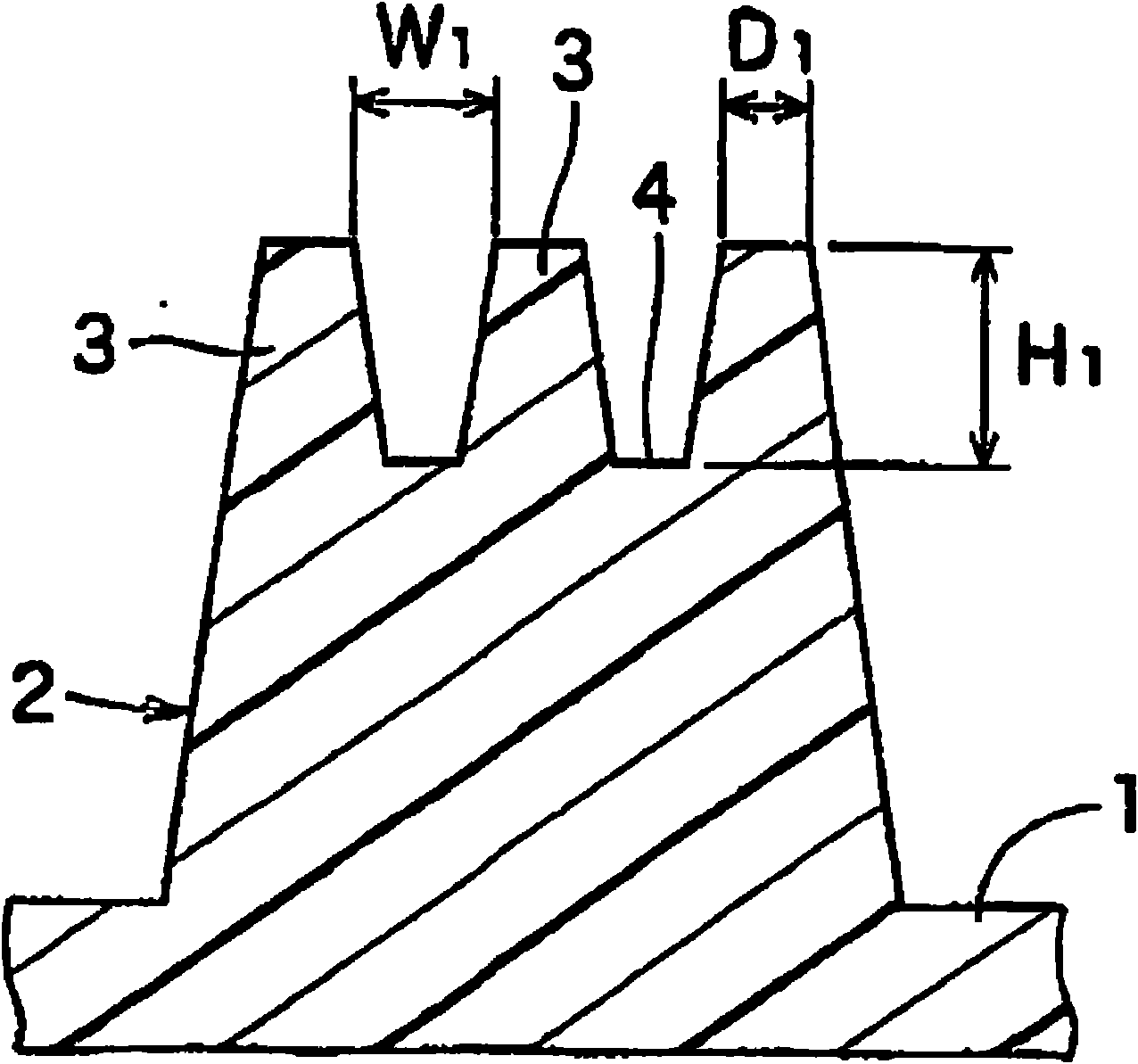Resin convex mould for relief printing and method for producing organic EL elements using the same
A letterpress printing and resin technology, which is applied in the field of organic EL element manufacturing, can solve the problems of low solubility, high polymer swelling, and reduced dimensional accuracy, achieving small damage, stable dimensional accuracy, and no damage effect
- Summary
- Abstract
- Description
- Claims
- Application Information
AI Technical Summary
Problems solved by technology
Method used
Image
Examples
Embodiment
[0050] Next, examples will be described.
[0051] Prepare Figure 1 ~ Figure 3 Resin relief of the structure shown. The JIS rubber hardness of the resin relief plate was Shore A 85°, and the weight change rate of the resin relief plate was 5% when continuously immersed in anisole at a room temperature of 23° C. for 24 hours. This resin relief plate was produced using the plate materials shown in Table 1 below in the same manner as the above-mentioned resin relief plate. The total thickness of the plate was 1.3 mm, and the thickness of the substrate was 0.7 mm.
[0052] Table 1
[0053] The total thickness of the plate
PUM
| Property | Measurement | Unit |
|---|---|---|
| Tensile strength | aaaaa | aaaaa |
| Tensile force | aaaaa | aaaaa |
| Diameter | aaaaa | aaaaa |
Abstract
Description
Claims
Application Information
 Login to View More
Login to View More - R&D
- Intellectual Property
- Life Sciences
- Materials
- Tech Scout
- Unparalleled Data Quality
- Higher Quality Content
- 60% Fewer Hallucinations
Browse by: Latest US Patents, China's latest patents, Technical Efficacy Thesaurus, Application Domain, Technology Topic, Popular Technical Reports.
© 2025 PatSnap. All rights reserved.Legal|Privacy policy|Modern Slavery Act Transparency Statement|Sitemap|About US| Contact US: help@patsnap.com



